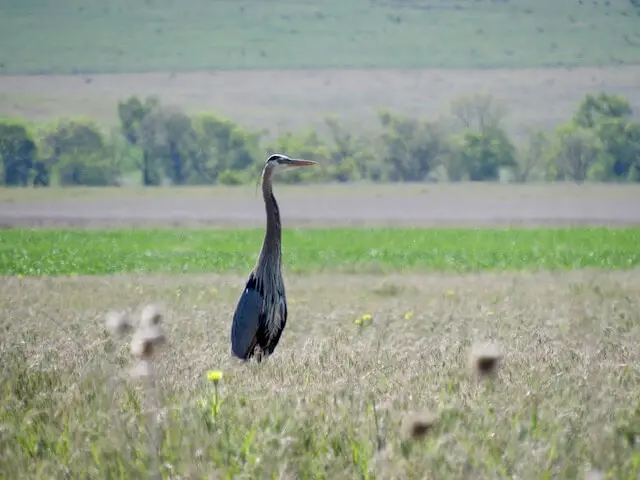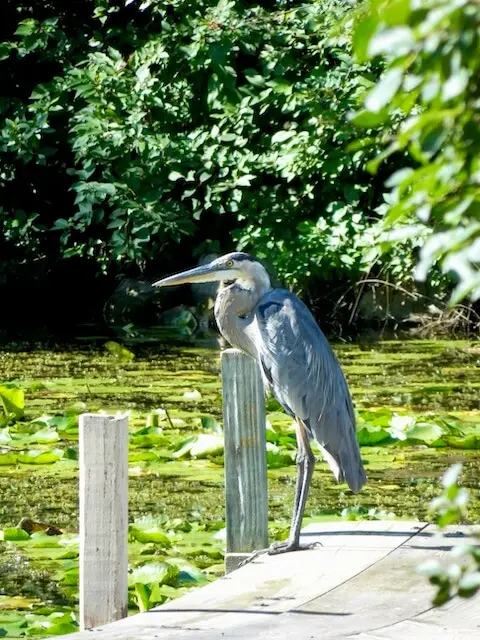
Last night, beneath the cold, star-filled sky, I heard from high above the familiar honks from flocks of Canadian geese flying north. Unsurprisingly, this Spring’s migration has begun, yet it seems a bit early. But it has been warmer than usual for the past several weeks. There have been only small dips in the overnight temperature, but certainly not like the deep freezes of years prior.
Even tonight, there is a slight chance of snow, a possible dusting, predicted. Indeed, it’s not enough to halt one of the Earth’s greatest bird migrations. They have begun flying to the thawing northern latitudes, anticipating Spring’s fresh sprouts bursting through the dark. Millions of birds will pass through this land and onto Canada. Warming soil and clear waters welcome the returning birds to discover well-stocked lakes, streams, and ponds.
Great Blue Herons have begun arriving in the panhandle. They, too, are a bit early, but they’re anxious to make nests high up atop 70-plus-year-old cottonwoods along the White River. I love to watch them sail above the treetops, searching for the perfect perch. They glide silently on wingspans, stretching more than 6 feet, tip to tip. They gather in the lush wetlands of the larger creeks and marshy areas of Whitney Lake, where bluegills are plentiful.
The male herons arrive first to rebuild or reclaim their nest.
Each winter, these nests sit empty, waiting for the annual return of their builders. The nests are made of branches, twigs, long and short sticks intertwined into wide baskets. The males construct these elaborate nests as part of the lure for a potential mate. Together, the birds will keep a clean layer of bedding of moss, soft leaves, and more green sticks to secure the nest for the season’s hatch.
In Western Nebraska, where the winds blow nearly constantly, the Great Blues will once again find safety atop their platforms of twisted sticks. I look forward to hiking to the known local nesting areas. With binoculars in hand, I enjoy watching the heron move in. And soon, within a couple of months, their downy-tufted chicks’ heads will be popping above the nests, anxiously awaiting a feeding from their long-legged parents.

Share this post: on Facebook on Google+ on LinkedIn
